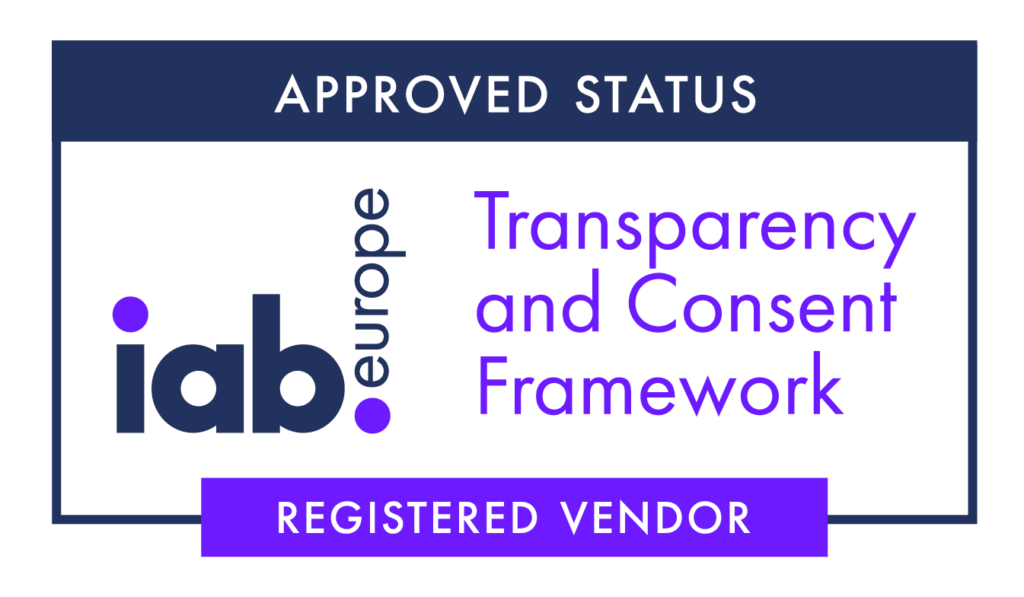1. Core Concepts & Technology
What is Intent Based Programmatic?
It is all about targeting individuals within key accounts that read content online containing key-words specified by the customers. By doing this we can not only target the right specialist, we can in real time identify companies with highest consumption patters of relevant content, i.e. more likely to be in market. Intent Based Programmatic is also known as Real Time Intent.
What is Strategic Account Based Marketing?
It is all about micro-targeting specific accounts and reaching not only the experts but other decision makers. This runs on higher frequency targeting to ensure a wider team of individuals is influenced. Strategic Account Based Marketing is also known as Strategic Account Based Programmatic.
Why IP targeting?
By using IP targeting as identifier of users coming from target accounts, we secure full precision towards B2B audiences within target companies.
Is IP targeting stable?
IP targeting is not as volatile as cookies, which need to be kept alive/reset constantly if made accessible in the digital execution. Moreover,as cookies are made more scarce, both due to personal data legislation and increasing ability for browsers to remove cookie data, IP targeting can soon become the norm to deterministically target in B2B.
Do you use cookie data?
Use of enriched 3rd party cookies can be used as supplement to reach in markets where this option in compliant with personal data privacy regulations.
Is AccountInsight based on retargeting my company visitors?
The default set-up is pure prospecting – Retargeting can be used to optimize engagement.
2. Targeting & Optimisation
Account Targeting Optimisation
Account Optimization works at 2 levels
a) Internally driven by programmatic teams. Accounts with too much or too little traffic are monitored for optimization as number of accounts in program is balanced against the agreed number of impressions. Too many accounts for any fix number of impressions results in many accounts non-performing
b) Jointly with the Customer. With direct access to weekly data in the dashboards, Customers can decide – within the framework of SOW, which are the accounts they wish to keep investing their marketing money.
Media Optimisation
The choice of media is initially driven by the keywords defined by the landing pages in program and products and services that define the Customer’s offering. Additional media is added on the basis or relevance, either via the specification of a White List or via IAB Categories. Actual media execution in reviewed internally on a weekly basis and balanced over time and non relevant or poorly performing titles are removed from further execution.
Impressions Optimisation
As part of the SOW an estimated number of impressions are agreed. This number is a monthly average, which means that during the initial phases of the program we deliver less impressions (i.e. lower number of impressions are used to determine best media mix, accounts in market, optimize IP’s…), and volumes are progressively lifted till the the overall numbers are met. Programmatic B2B is not about the volume of impressions but about having the right impressions.
3. Compliance & Data Usage
Is your technology GDPR compliant
AccountInsight is built upon European best-practices with a natural GDPR compliance by design.
When information regarding IP-address is collected by the tracking pixel it is read by our system matched with our database of companies. If a match is not found we identify the visits as ISP (Telco visit).
Only IP-addresses belonging to registered companies are therefore stored by AccountInsight.
Alongside with the IP address of registered companies, we collect time stamps ( time page accessed) as well as page viewed.
We do not store personal data regarding cookies as our tracking pixel ignores ( ie does not even retrieve) other information such as browser version, operating system, cookie information, time spent per web page.
Does AccountInsight license third party IP data?
The technology and processes that allocate the right IP address for advertising purposes it central to AccountInsight’s ability to target. As such, we run IP identification and mapping within our own platform.We do not license reverse IP information from other companies.
4. Media & Campaign Execution
Is AccountInsight a media company?
AccountInsight is fully media independent. Media and platforms are added when is in our client best interest, very often due to brand safety and relevance.AccountInsight was incubated as solution within GroupM, the world’s largest advertising media company in terms of billings. GroupM was formed in 2003 by WPP Group to serve as the parent company of WPP’s media agencies.
Can you remove media sites if requested?
Media domains ( and even entire IAB categories) can be deactivated. If you already have private deals with some domains or are using them in different programmatic solutions you can also look at the occasional overlap as increased reach.
Which AdExchange are you using?
Account Based Advertising is executed and optimized through a bespoke integration with over 50 different ad-exchanges, covering both global players and local/regional exchanges, including OPENX, Rubicon/Magnite, Appnexus/Xandr, PUBMATIC, Google_ADX, SmartAdserver, Index…
Can customers implement 3rd party 1×1 pixel tracking?
AccountInsight can implement 3rd party 1*1 Pixel to track impressions being delivered. Clicks are normally tracked at the customer end by adding campaign-specific UTMs that are only triggered when a click occurs, this means that for the click tracking, we will just use the click tracker link supplied by the customer as the landing page. This allows for independent 3rd party auditing of campaign execution.
You should always expect a % of discrepancy between the numbers reported by AccountInsight and the volume of data collected by the 3rd party pixel ( which tends to be higher). Reasons for the are numerous but as example, AccountInsight will always remove the test impressions and test clicks originated by the publishers whereas a 3rd party pixel will not be able to do that.
5. Performance & Measurement
Do campaign performance and viewability correlate?
Other than situations when viewability is extremely low, campaign performance and viewability do NOT correlate. GroupM DK ran a case study with 4 million impressions and 4.000 clicks. Media publishers were categorized in 3 groups: a) High Interaction and Low viewability, dominated by media publishers and publishers that write the content themselves b) Lower interaction rate and Low viewability, dominated by small local media players c) Lower interaction rate and High viewability, dominated by international media publishers.
The numbers showed that despite of lower viewability rates content based publisher websites are the ones driving the highest brand interactions.
What is viewability. Should I worry about it?
Viewability is the ability for a digital ad to be seen by an actual web visitor. It means that both, it needs to be visible on the screen at least for one second and the visitor needs to be human, not a bot or a machine – which makes up most of the Internet traffic. When as much as 50% of digital ads are not viewable, it’s no surprise that viewability has become a top concern in digital advertising.Due to the design structure of most content rich website ( news media , etc… ) much of the content will be out of screen when the page is loaded. The implication is that some of the ads placed lower in the screen will initially not be visible. As banners are instantly sold when the page is loaded, we can not at the same time optimize for highest viewability by also wanting to be in the right context. The two dimension will often be in conflict and hence we should make of viewability one of many campaign dimensions but not an absolute KPI.
What are the main differences in the reporting vs. traditional cookie solutions?
- All website interactions are resolved to the IP-ranges of target accounts (not using cookie ids). Therefore all report is done per individual company.
- The report only contains “website Interactions” ( = page views). Not visits or sessions.
- Interactions are not analyzed for clusters of interactions that we usually would label as sessions or visits. This means there is no measure for visit and no measure for pages/visit. (however, it is available from the ad servers at the campaign level but not at company level)
- Website interactions per target account are page views from the target accounts’ IP-address. This includes both campaign and non-campaign related interactions.
It is a deliberate choice to resolve only by IP and the benefit is a total overview of advertising and engagement per company IP-address (ie. target account).
When we resolve by IP we often “underreport” – This happens when a user is exposed at work and then goes home and engage/convert at another IP-address. This scenario can be examined when using campaign cookies ( as long as they are still alive).
What is click validation?
In digital advertising ecosystem, a “click” represents a user interaction with an ad – typically indicating interest and engagement. However, not all clicks are genuine or valuable. Some may come from bots, scanners, or validation tools. At AccountInsight (AI), our objective is to ensure that only real, high-quality user clicks are reported. The following outline explains how we validate clicks to maintain data accuracy and campaign integrity.
- Initial Traffic Filtering
AccountInsight implements proactive traffic filtering before any click is recorded. Our traffic management process blocks invalid traffic from interacting with ads, reducing the volume of suspicious clicks at the source. - Two-Layered Click Tracking
We validate clicks using two independent systems:
- AI DSP (internal bidder system): Tracks impressions and clicks with associated information around the bid transaction and related parameters.
- Third-party monitoring system: An independent service that captures and verifies click-level data.
Clicks confirmed by both systems are considered valid and included in reporting.
- Click Discrepancy Filtering
Clicks are deliberately under-reported if there is uncertainty about their validity. When inconsistencies arise, we investigate by reviewing log-level data, ensuring suspicious activity is excluded. - Filtering Out Test Clicks
Some platforms perform “test clicks” to validate creatives and landing pages. These can mimic real user behavior but do not represent genuine interest. We cross-check click data with impression logs and exclude clicks where the IP or user ID doesn’t match expected patterns. - Click Pattern Monitoring
Our system monitors for irregular click behavior, such as spikes that could indicate scanning activity. Anomalies are flagged and examined in detail. - Adaptive Validation Methodology
Click validation methods evolve continuously to keep up with new behaviors and scanning tools. Although some ad-scanning practices lack transparency, our approach adapts to maintain accuracy in reporting.
How do I troubleshoot impression discrepancies in different platforms?
Impression discrepancies are an expected outcome when using multiple measurement systems. A difference of 5% to 10% is generally acceptable. However, if numbers appear significantly off, especially when using third-party ad servers or tags, it’s worth validating that the implementation and data capture are working correctly. With proper collaboration and data sharing, these issues can typically be resolved quickly and accurately.
Here’s a breakdown of why these differences occur and how to troubleshoot them effectively.
Why Do Impression Discrepancies Happen?
- Timezone Differences: Ensure that both AccountInsight and the third-party reporting tools are using the same timezone when comparing data.
- Incorrect Pixel Implementation: Impression trackers must be implemented either via the “Pixels and Scripts” section in the Creative pane or directly in the HTML using <img src> or <script src>. Incorrect placement can result in zero or inflated counts.
- Auction ID Deduplication: AccountInsight deduplicates impressions by auction ID. If the third-party tool does not deduplicate – or cannot ingest the auction ID via macro – discrepancies will occur.
- Invalid Impression Filtering: Some third-party ad servers (e.g. DCM/Google Campaign Manager) may filter out impressions they classify as invalid. AccountInsight does not apply such filtering at this level, as upstream traffic is already filtered and verified due to our B2B focus.
Impression-Specific Troubleshooting Tips
- Use a debugging tool (e.g. browser dev tools) to check whether impression pixels are firing as expected.
- Confirm the creative is being served and tracked properly across environments.
- Request invalid impression counts or logs from the third-party provider to help isolate discrepancies.
General Troubleshooting Strategy
- Group impression data by relevant fields (e.g. date, creative ID, inventory source, app/site ID, publisher).
- Look for high-percentage differences tied to specific creatives, environments, or platforms.
- Align filters and date ranges between AccountInsight and third-party reporting before comparing.
- If possible, share log-level data including Auction IDs for precise data matching.
How do I troubleshoot click discrepancies in different platforms?
In programmatic advertising, it is common for different systems to report varying numbers of clicks when measuring the same campaign. This discrepancy is especially prevalent when banners are served via external ad servers that apply their own tracking and validation logic.
As discrepancies can occur across platforms for several reasons, below are the most common causes and recommended troubleshooting steps:
- Different Validation Standards: Platforms apply different rules for filtering or validating clicks.
- Test or Scanner Clicks: Creative validation scans by exchanges generate non-user clicks.
- Bot and Invalid Traffic: AccountInsight filters out non-human traffic, which some systems may still count.
- Redirect Chain Issues: Redirect failures or differences in tracking chains can impact click visibility across systems.
- AccountInsight also re-aggregates data for up to 72 hours after receipt, as not all clicks are released by ad exchanges in real time.
Click-Specific Troubleshooting Tips
- Ensure the third-party click tracker is implemented correctly and fires as expected.
- Confirm that the creative is rendering and redirecting properly.
- If using a third-party ad server, verify the correct placement of click macros.
- Remember that AccountInsight counts a maximum of one click per auction ID; multiple clicks during the same session are not be counted.
How Customers Can Help
To assist in resolving discrepancies, we recommend providing the following data:
- Click and impression logs from external ad servers
- Timestamped logs including IP addresses or user IDs (where privacy regulations allow)
- Details of the ad creative’s redirect path setup
- Information on any known scanning or validation tools used during campaign delivery
- Provide side-by-side reports from AccountInsight and third-party platforms, using matching filters and date ranges.
- Break down reports by: Date, Creative ID, Inventory Source, Publisher, Site ID, App ID, and any additional relevant fields.
If possible, share log-level data including AccountInsight Auction IDs for more precise comparison.
6. Platform Capabilities & Reach
What is AccountInsight’s geographical footprint?
AccountInsight’s programmatic B2B is Geo-agnostic, with a 100% focus on a Global scale and reach. There are however, geographical differences due to different digital maturity levels in different markets. In general most current programs cover Western Europe and US/Canada.









